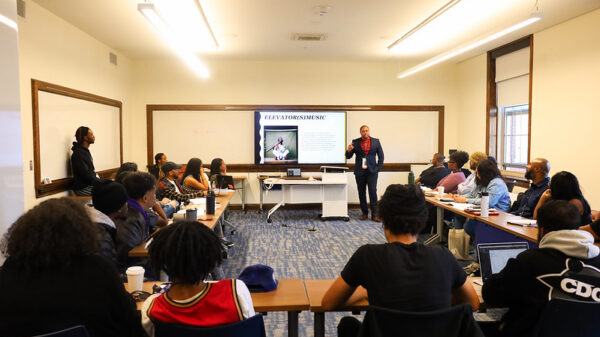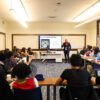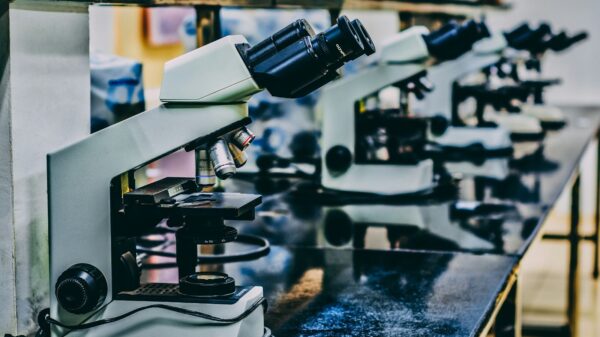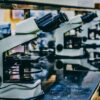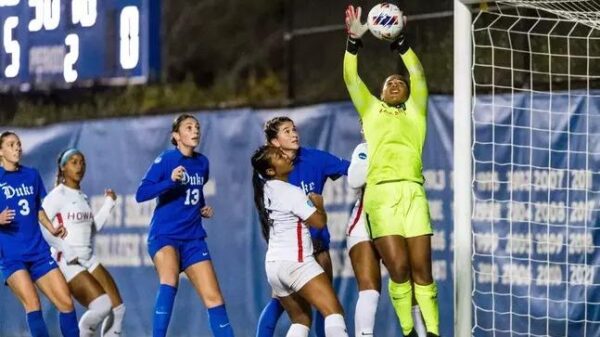“One, two, three– we love Chuck Brown!” the audience called out as a group of people, including D.C. Mayor Muriel Bowser, cut a red ribbon in front of a painting of the Godfather of Go-Go.
The Go-Go Museum and Café in D.C.’s Anacostia neighborhood celebrated its grand opening with a soft launch on Nov. 18. The 8,000 square foot building hosts two floors of interactive exhibits, like a hologram of Gregory “Sugar Bear” Elliot and other legends, artifacts from fixtures of the go-go scene, and artwork about the D.C. music genre.
“You are going to be so very proud of the vision, the content and the experience that you’re going to get at the Go-Go Museum,” Mayor Bowser said. “We are reminded that a people who doesn’t remember its history will lose everything. We have to be committed to this museum. We have to be committed to educating our young people and educating the next generation of musicians, and we have to be committed to our culture.”
A nearly at-capacity crowd waded through the museum and outdoor area. Go-go-themed clothing, calendars and other memorabilia were available for purchase at the front of the building.
The museum, which has been in the making for over ten years, is the creation of activist Ronald Moten and former Howard professor and museum co-curator Natalie Hopkinson, PhD. The two are a part of the #DontMuteDC movement, which started in 2019 after a resident in the Shaw neighborhood complained about the MetroPCS store on the corner of 7th Street and Florida Ave NW playing go-go music. Moten and Hopkinson created a petition that received over 80,000 signatures to allow the owner to continue playing music. The organization’s work also resulted in go-go being named the official music of the District.
Moten came up with the idea for the museum in 2009. Hopkinson, who did her thesis on go-go music, said the museum is “work.”
“What we’re doing here is that we have identified some of the cultural forms that have sustained us as Black people over centuries and across oceans. And that is go-go. Go-go is one of them. It’s not something you need a PhD to kind of explain. I mean, people understand when the music starts, the beat hits, your body starts moving. Go-go is something,” Hopkinson said.
Funding for the museum came from a combination of donations, fundraising and grants from the city for about $2.5 million. The curators envision the space becoming more than a museum, but rather a space for the community.
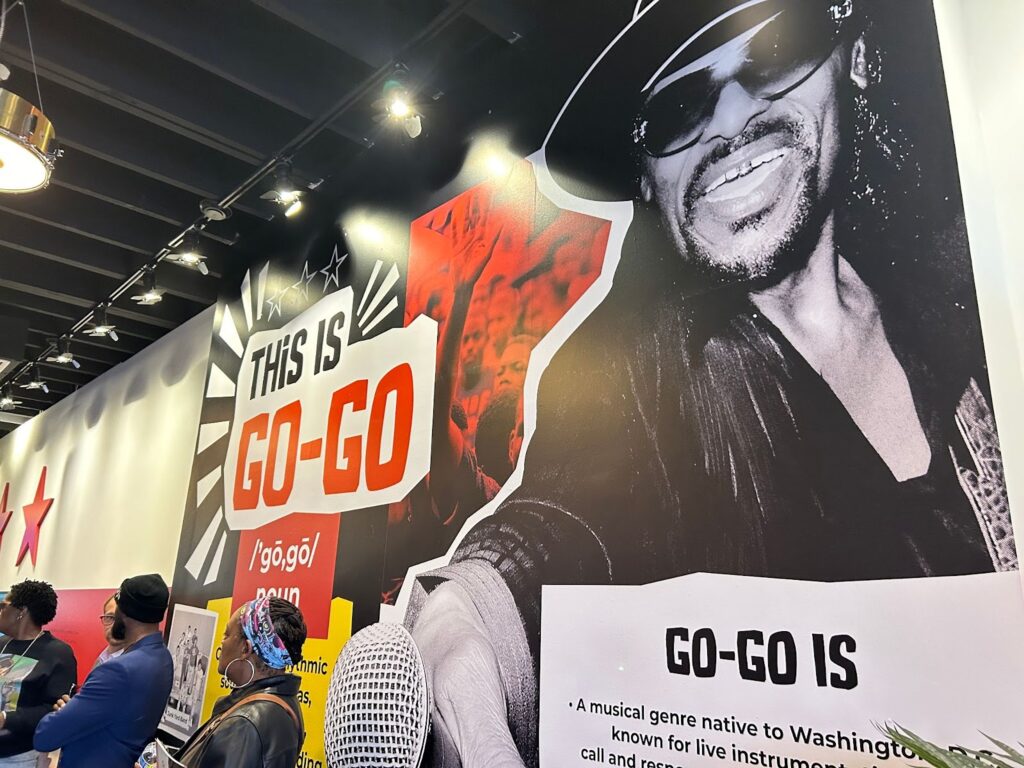
“We need an endowment. We need a five-year commitment just so that we can sort of stabilize the operations here. It looks beautiful, but it’s all because we have friends. I don’t think that you should rely on people’s kindness,” Hopkinson said. “People need to eat. So we want to be able to do it. We’ve gotten this far because people believed in what the mission is. Now it’s time for whatever the powers that be to put some resources behind this in a major way so we can continue.”
After the ribbon-cutting ceremony, the event turned into a go-go party. Chef Angela Bethea, who heads the café, served “light bites,” as noted in the flyer, including fish tacos and chicken wings.
Two stages on opposing sides of the outdoor patio at the back of the museum were occupied by two bands in a versus setup– Junkyard Band and the Backyard Band. The bands played back and forth, with the audience turning like spectators at a tennis match. Distinct percussive rhythms and a cowbell rang out in the audience’s ears as people danced and responded to the band’s calls, “Ain’t no battle just a crank fest!”
Professor Dee Dwyer, a D.C. native whose photography is displayed throughout the museum, said the event felt like a family reunion.
“It just means us controlling the narrative and claim[ing] space. And then also honor our culture. Creating a safe space for our community. I’m so happy to be here. I’m happy that my artwork is part of this exhibition. I’m proud of the culture right now,” Dwyer said.
Dwyer’s photo sits at the top of the staircase that leads to the basement.
“It’s beautiful to be on the other side because I’m always the person documenting, but it was one of those experiences where I was able to enjoy. It felt like a family reunion. These are people that I’m normally documenting their stories, telling their stories, sending their stories out to the world to be respected, honored. Normally it’s business-oriented, but I get to party with my folks today,” she said.
Wiley Brown, Chuck Brown’s son, came to tears multiple times throughout the day. He said his father would be proud of the space.
“My father would talk about how much this city loved this music that he created so much, and other bands followed in his footsteps and his foundation. They created their own sound and it became a sound for the town. It’s still here and today we’re here in the go-go museum. I know he’d be super elated and he’d be jumping around this joint right now,” Brown said.
The museum and café are set to officially open to the public in February 2025, giving a physical home to go-go.
“What’s tearing us apart in this world right now is that we are all looking for a home. We’re constantly being displaced. We’re constantly being criminalized. We’re constantly being muted. Our votes are muted, our bodies are muted, our music is muted. Now that the Go-Go Museum is here, go-go music is one thing that will never be muted again. We have a home forever, and we just want to make it last forever,” Natalie Hopkinson said.
Copy edited by Anijah Franklin


